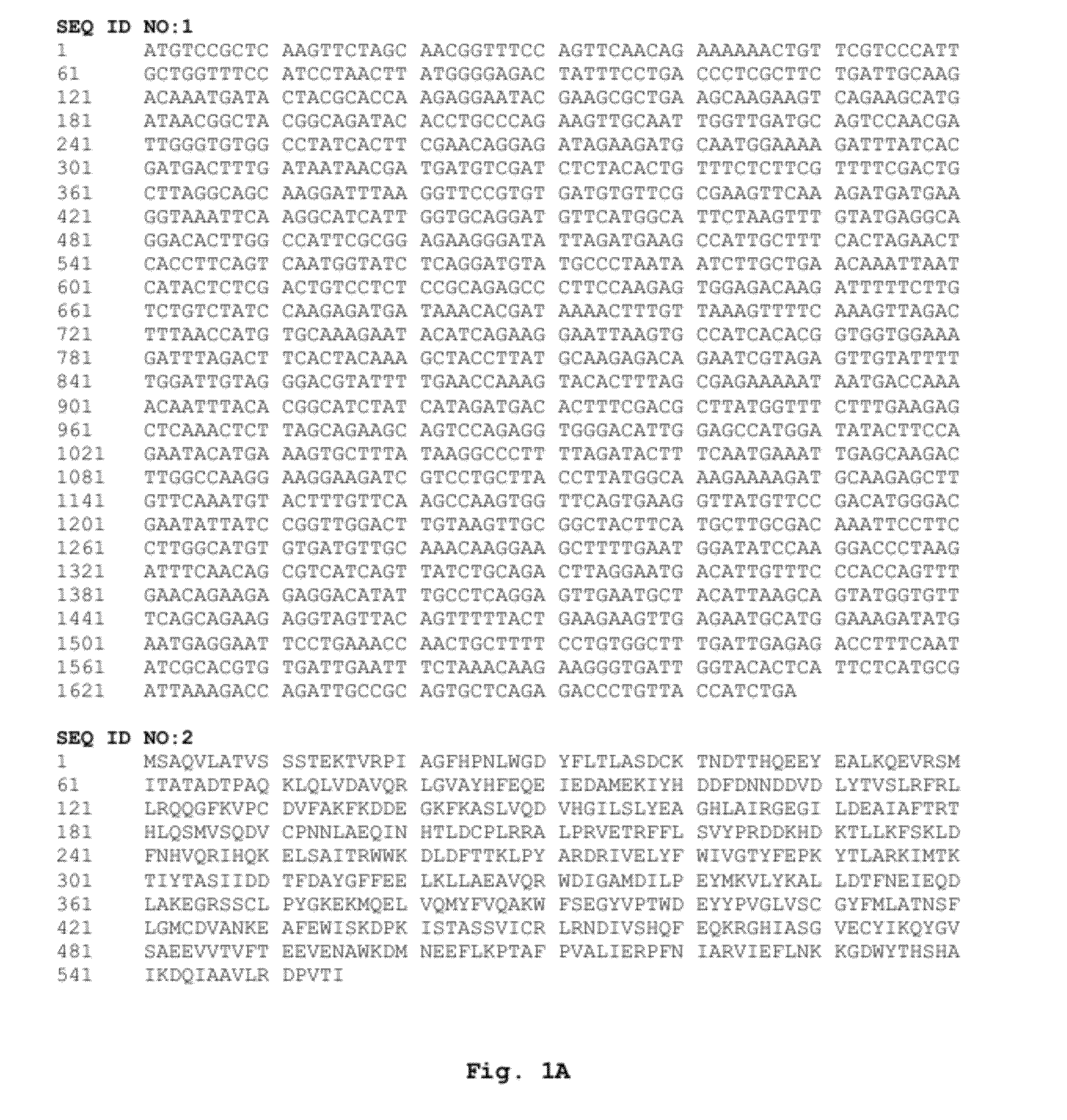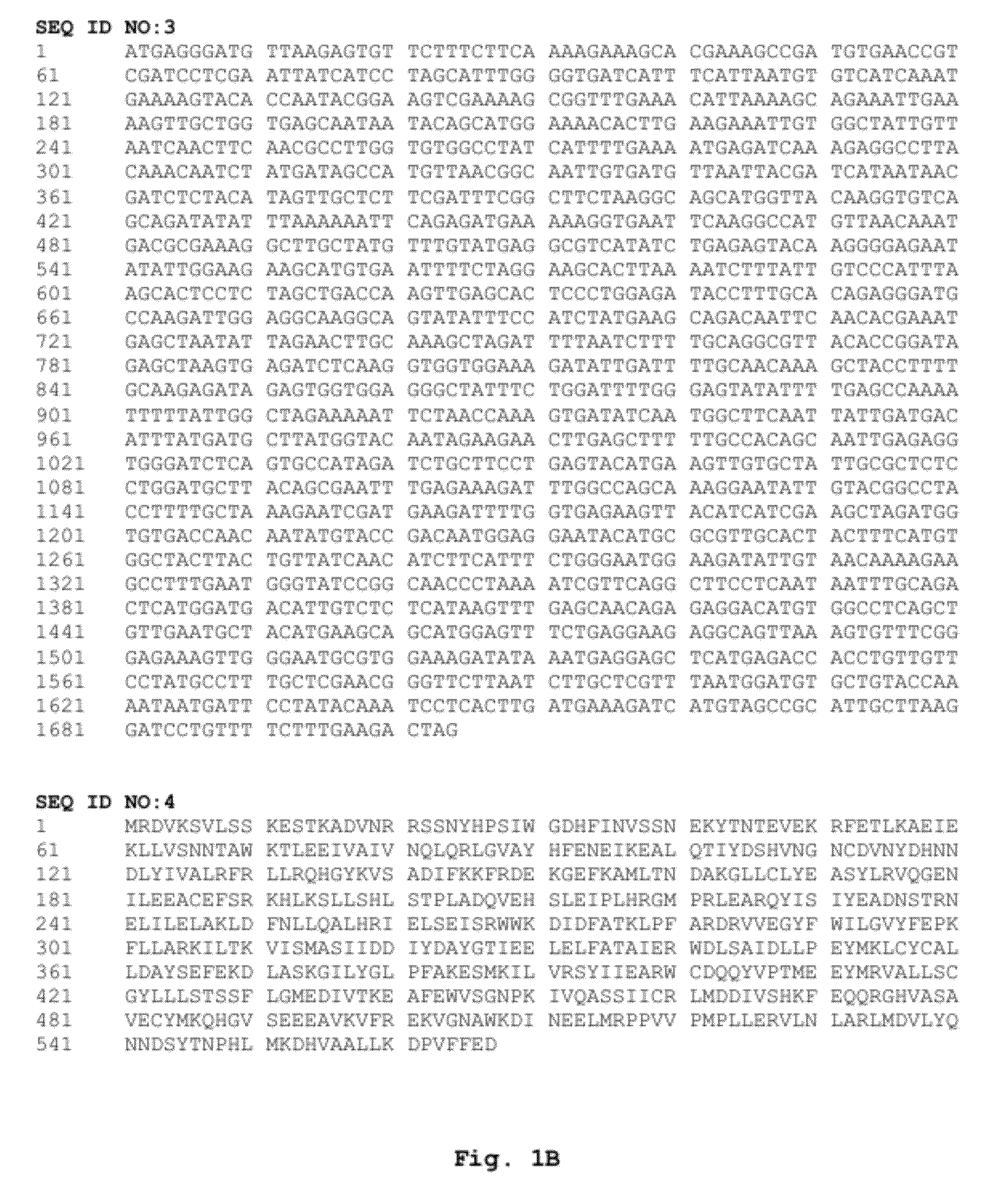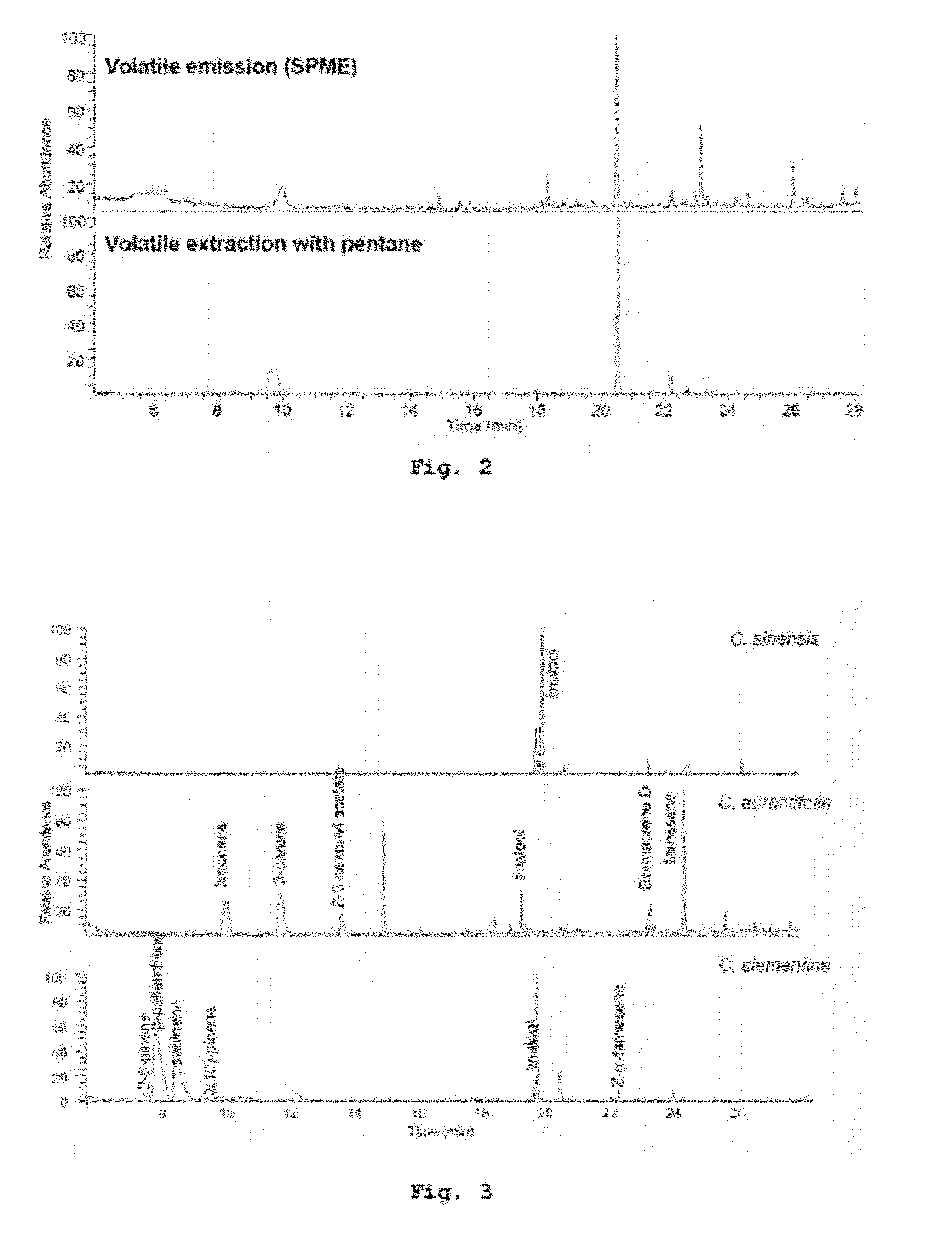Repellent compositions and genetic approaches for controlling huanglongbing
a technology of compositions and huanglongbing, applied in the field of huanglongbing-related compositions, can solve the problems of affecting the safety of these compositions, and many of these compositions are extraordinarily long-lived, and achieve the effect of enhancing the accumulation of sesquiterpenes
- Summary
- Abstract
- Description
- Claims
- Application Information
AI Technical Summary
Benefits of technology
Problems solved by technology
Method used
Image
Examples
example 1
Analysis of Leaf Volatile Content and Emission from Citrus and Guava Plants
[0065]Volatile content and emission was studied in leaves from different genotypes (Psidium guajava, Citrus sinensis, Citrus aurantifolia and Citrus clementina). Analyses were conducted using leaves at different developmental stages, collected at different hours of the day and in different seasons. Each sample was analyzed at least four times (two biological replicates plus two technical replicates).
[0066]To determine volatile content, collected leaf tissue was immediately frozen in liquid nitrogen and stored at −80° C. until extraction. Freeze ground material (200 mg) was weighted in screw-cap Pyrex tubes and immediately 3 mL of cold pentane was added. Samples were homogenized on ice for 30 s with a Yellowline homogenizer (model DI 25). The suspension was vortexed for 15 s and 3 mL of Milli-Q water were added, further vortexed for 30 s and centrifuged at 1800 g for 10 min at 4° C. The organic phase was recov...
example 2
GC-MS Analysis
[0069]A Thermo Trace GC Ultra coupled to a Thermo DSQ mass spectrometer with electron ionization mode (EI) at 70 eV was used. The ion source and the transfer line were at 200 and 260° C., respectively. Volatile compounds were separated on a HP-INNOWax (Agilent J&C Columns) column (30 m×0.25 mm i.d.×0.25 μm film). The column temperatures were programmed from 40° C. for 5 min, raised to 150° C. at 5° C. min−1, then raised to 250° C. at 20° C. min−1 and held 2 min at 250° C. The injector temperature was 220° C. Helium was the carrier gas at 1.5 mL min−1 in the splitless mode. Electron impact mass spectra were recorded in the 30-400 amu range with a scanning speed of 0.5 scans−1. Compounds were identified by matching of the acquired mass spectra with those stored in reference libraries (NIST, MAINLIB, REPLIBT) or from authentic standard compounds when available.
example 3
Response of D. citri to Guava Volatiles
[0070]A series of experiments were designed in order to investigate the effect of guava leaf volatiles on D. citri behaviour. D. citri adults of mixed sex were obtained from continuously reared cultures on C. limonia seedlings mantained in Fundecitrus (Araraquara, Brazil) at 25±1° C., 70±10 relative humidity and a L14:D10 photoperiod.
[0071]A Y-tube olfactometer with one 12.5 cm long entrance arm and two 21.0 cm long test arms (0.6 cm inner diameter) was used for behavioural assays. Charcoal cleaned air (granulated 4-8 mm. Applichem GmbH, Darmstadt, Germany) was pumped (0.4 L min−1) through two glass jars of 2 L containing the volatile sources, consisting of air or guava seedlings. 40 psyllids were assayed in each experiment, and each experiment was conducted at least per triplicate. Position of psyllids was determined after 10 min and those which had passed 10.0 cm after branching were recorded as ‘responsive’. Results showed that guava volatil...
PUM
| Property | Measurement | Unit |
|---|---|---|
| Fraction | aaaaa | aaaaa |
| Fraction | aaaaa | aaaaa |
| Stability | aaaaa | aaaaa |
Abstract
Description
Claims
Application Information
 Login to View More
Login to View More - R&D
- Intellectual Property
- Life Sciences
- Materials
- Tech Scout
- Unparalleled Data Quality
- Higher Quality Content
- 60% Fewer Hallucinations
Browse by: Latest US Patents, China's latest patents, Technical Efficacy Thesaurus, Application Domain, Technology Topic, Popular Technical Reports.
© 2025 PatSnap. All rights reserved.Legal|Privacy policy|Modern Slavery Act Transparency Statement|Sitemap|About US| Contact US: help@patsnap.com



